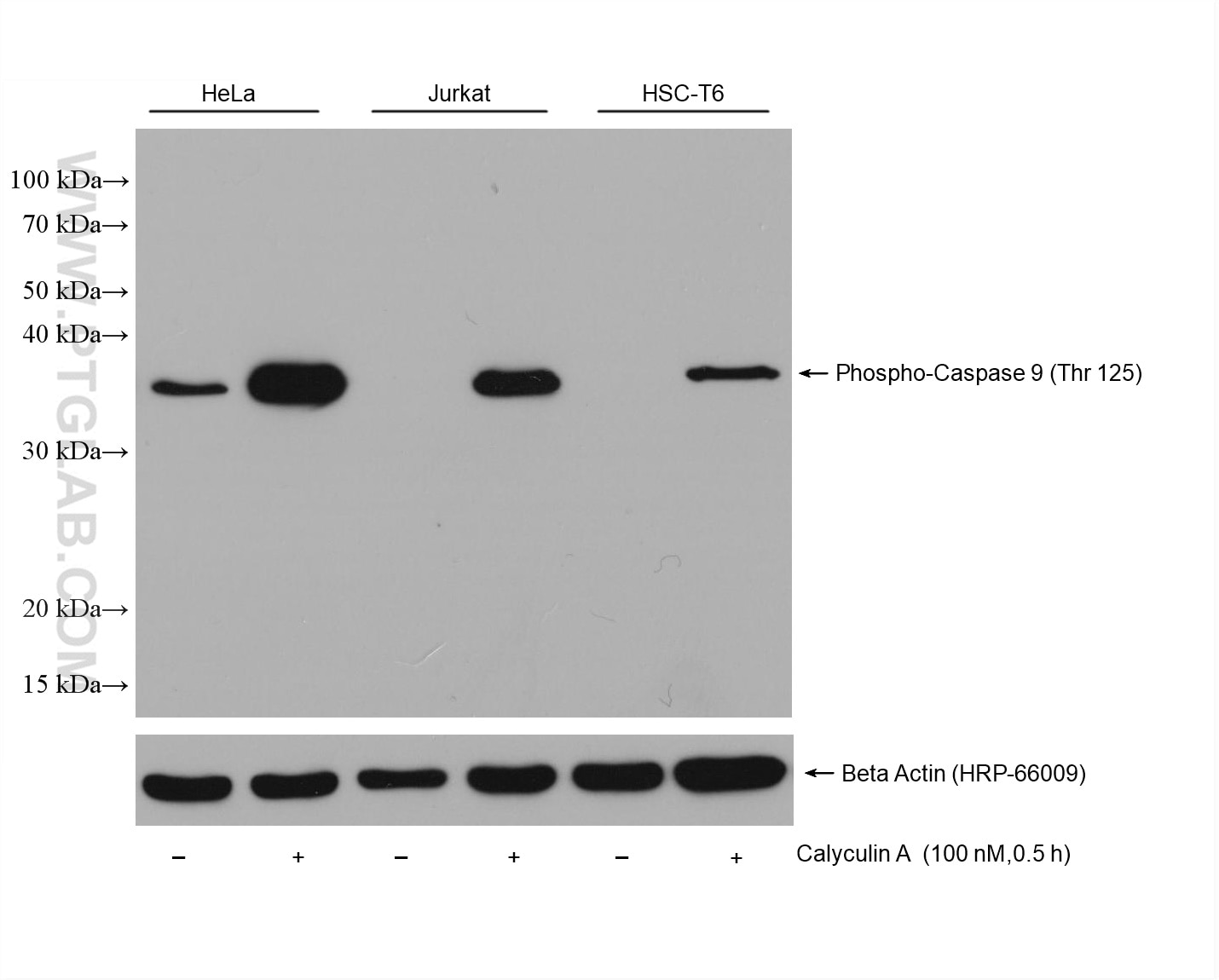Anticorps Monoclonal anti-Phospho-Caspase 9 (Thr125)
Phospho-Caspase 9 (Thr125) Monoclonal Antibody for WB, Indirect ELISA
Hôte / Isotype
Mouse / IgG1
Réactivité testée
Humain, rat
Applications
WB, Indirect ELISA
Conjugaison
Non conjugué
CloneNo.
1B5E11
N° de cat : 68136-1-PBS
Synonymes
Galerie de données de validation
Informations sur le produit
68136-1-PBS cible Phospho-Caspase 9 (Thr125) dans les applications de WB, Indirect ELISA et montre une réactivité avec des échantillons Humain, rat
| Réactivité | Humain, rat |
| Hôte / Isotype | Mouse / IgG1 |
| Clonalité | Monoclonal |
| Type | Anticorps |
| Immunogène | Peptide |
| Nom complet | caspase 9, apoptosis-related cysteine peptidase |
| Masse moléculaire calculée | 46 kDa |
| Poids moléculaire observé | 36 kDa |
| Numéro d’acquisition GenBank | BC002452 |
| Symbole du gène | Caspase 9 |
| Identification du gène (NCBI) | 842 |
| Conjugaison | Non conjugué |
| Forme | Liquide |
| Méthode de purification | Purification par protéine A |
| Tampon de stockage | PBS only |
| Conditions de stockage | Store at -80°C. 20ul contiennent 0,1% de BSA. |
Informations générales
Caspase 9 also name as MCH6, APAF3, APAF-3, ICE-LAP6 and CASPASE-9c, is a member of the cysteine-aspartic acid protease (caspase) family. It's synthesized as a 46 kDa precursor protein which can be cleaved into a 35 kDa subunit and a 11 kDa subunit. Control of all caspases is tightly regulated by a series of phosphorylation events enacted by several different kinases. Caspase-9 is the most heavily phosphorylated of all caspases, with phosphorylation of at least 11 distinct residues in all three caspase-9 domains by nine kinases. It plays a central role in the mitochondrial or intrinsic apoptotic pathway that is engaged in response to many apoptotic stimuli. Once activated, caspase-9 cleaves and activates the effector caspases 3 and 7 to bring about apoptosis. It's reported that there is an increase in caspase 9 expression and activity in the hypoxic brain. Inhibition of Caspase 9 activity would render opportunity to treat neurological diseases such as stroke, neurodegenerative diseases or brain injury caused by hypoxia. (PMID: 19788417, PMID: 10529400, PMID: 9812896, PMID: 18840507, PMID: 29066624)



